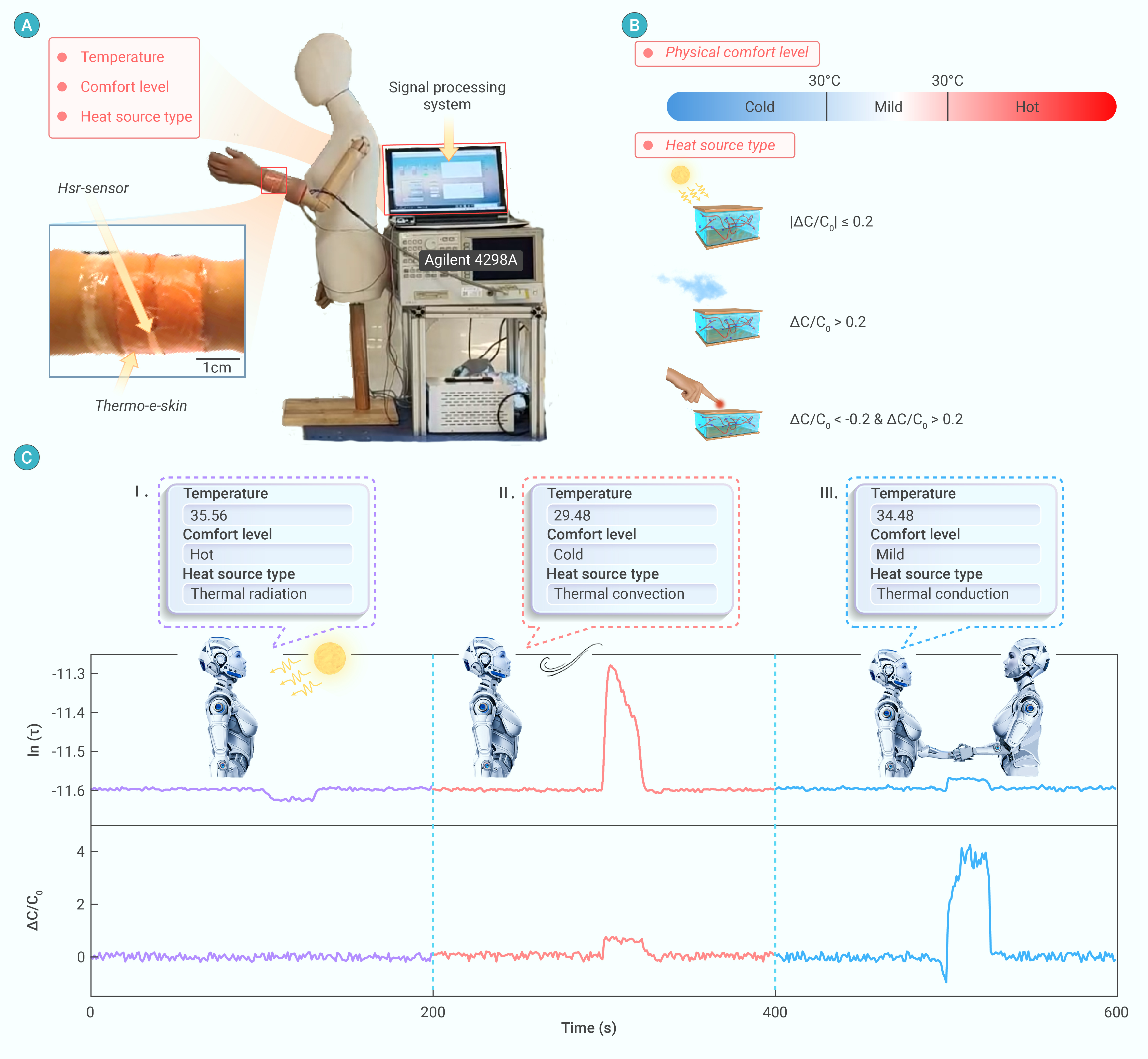The human skin is an intricate organ capable of sensing and responding to a wide array of thermal stimuli, which is critical for maintaining comfort, health, and safety. Traditional thermosensors, however, fall short of replicating this complex function, as they typically measure only basic temperature values without considering other aspects like the source or type of heat. This limitation restricts the application of current thermal sensors in advanced technologies such as robotics, prosthetics, and intelligent systems where a more nuanced understanding of the thermal environment is crucial.

The research team led by Professor Weishu Liu from the Department of Materials Science and Engineering at the Southern University of Science and Technology (SUSTech), along with collaborators, has made another significant breakthrough in the field of thermal functional skin.
They have proposed a novel heat source recognition sensor (hsr sensor) capable of simulating the thermosensation function of human skin, recognizing heat sources under various conditions such as radiation, convection, and conduction. This innovation challenges the traditional perception that heat sensing is limited to temperature measurement. Based on the ion relaxation phenomenon, this sensor can simultaneously achieve temperature, proximity, and pressure sensing functions. By combining these different sensing signals, it can identify different heat sources.
Their related paper, entitled “Heat source recognition sensor mimicking the thermosensation function of human skin”, has been published in the interdisciplinary journal The Innovation.
The design of the hsr sensor is inspired by the multi-dimensional perception ability of human skin to the thermal environment, including temperature value, heat source, energy level, and duration. Unlike existing thermal sensors that can only measure basic temperature values, this sensor can respond to temperature, pressure, and proximity stimulation signals and distinguish different types of heat sources, such as radiation, convection, and conduction. This breakthrough technology endows robots with more delicate and complex temperature perception capabilities, providing a reliable solution for the development of biomimetic electronic skin for intelligent robots and prosthetics.
Based on the ion relaxation phenomenon, the hsr sensor has temperature, proximity, and pressure sensing functions. The ion relaxation time (𝜏) is an intrinsic parameter of the material, which only responds to temperature changes and is not affected by other signals, making it suitable for detecting temperature stimuli. The sensor based on the PBA-Li:nFSI (n=1,3,5) ionic thermoelectric gel has ultra-high detection sensitivity, capable of sensing temperature changes of 0.005°C. It maintains a linear response in the ultra-wide temperature range of -20°C to 180°C. In addition, the parallel plate capacitive structure of the hsr sensor is affected by the electric field and deformation, and its normalized capacitive change ΔC/C0 is also highly sensitive and has a fast response time to pressure and proximity stimuli. This enables the sensor to accurately distinguish between radiation, convection, and conduction heat sources (Figure 1).

Figure 1. The hsr sensor can accurately identify three types of heat sources: radiation, convection, and conduction
The research team integrated the hsr sensor into a prosthetic with electronic skin that has a constant temperature regulation function (Figure 2). It demonstrated its human-like heat sensing function through robot experiments, capable of recognizing multi-dimensional information of the thermal environment, such as temperature value, comfort level, and heat source signal. The hsr sensor has shown excellent performance in practical applications; whether it is detecting radiation heat sources under simulated sunlight, facing convection heat sources generated by a hairdryer, or simulating conduction heat sources through a handshake, the sensor can accurately identify and provide feedback on the corresponding signals.

Figure 2. A robot with human-like thermosensation function
Professor Weishu Liu’s research team has long been committed to pioneering new applications of micro-temperature difference thermoelectric conversion, with thermal functional skin fully demonstrating the practical value of micro-temperature difference heat utilization. In 2022, they reported the world’s first thermal functional skin with constant temperature regulation under a wide environmental temperature range. Building on this, in 2023, they developed a sweat gland-mimicking thermal functional skin with long-term constant temperature heat capabilities. Regarding the latest heat source recognition sensing results, Professor Weishu Liu also mentioned, “Thermal functional skin with heat source recognition sensing is expected to provide more innovative applications in the field of emotional interaction in the future”.
Master’s student Wenting Sun and doctoral student Pengxiang Zhang are the co-first authors of the paper. Professor Weishu Liu and Professor Zijian Zheng from The Hong Kong Polytechnic University (PolyU) are the co-corresponding authors, and SUSTech is the first affiliated unit of the paper.
Paper Link: https://doi.org/10.1016/j.xinn.2024.100673
To read all stories about SUSTech science, subscribe to the monthly SUSTech Newsletter.
Proofread ByAdrian Cremin, Yingying XIA
Photo ByDepartment of Materials Science and Engineering